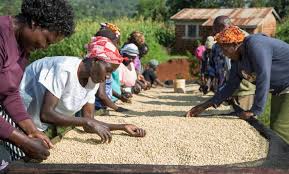A Cooperative Society is a form of business voluntarily owned, organized, and operated by members for their mutual benefits. Unlike corporate businesses, control lies with the members, and no individual is allowed to have a controlling share.
It is expected that most of the business of a cooperative should be carried out with the members’ patronage. Therefore, after paying all costs, the profit or surplus is returned to members in the form of a patronage refund.
If cooperatives operate along such lines, they may obtain certain kinds of assistance from the government and are usually exempted from taxes. The primary purpose of a cooperative business is to provide good service to its members and to return any surplus or profit arising from its operations to its owners.
Characteristics of Cooperative Societies
1. Open Membership: Cooperative businesses welcome all interested individuals, with no limit on membership size. Typically, it is open to people with similar interests who wish to join.
2. Democratic Control: Each member has equal voting rights, with the principle of one member, one vote. All members participate in major decision-making and have equal opportunity to stand for election.
3. Limited Return on Capital: Cooperatives focus on providing services at the lowest possible cost, meaning members should not expect large profits from their capital investments.
4. Patronage Dividend: Profits are distributed among members based on their share contributions, encouraging higher contributions from those who can invest more.
5. Cash Transaction Only: Cooperatives operate strictly on a cash basis, with no credit allowed for buying or selling produce.
6. Religious or Political Neutrality: Membership is open to all, regardless of religion, political views, or ethnic background, emphasizing the unifying role of cooperatives in society.
7. Constant Education of Members: Members are educated on various aspects like farm hygiene, livestock management, and modern production techniques, which fosters cooperation and skill development within the cooperative.
Read Also: 15 Medicinal Health Benefits Of Echinacea purpurea (Purple Coneflower)
Types of Cooperative Society

1. Producers Cooperative Society: Also called group farming cooperatives, these are formed to help small farmers benefit from large-scale farming, collective purchasing, and shared use of heavy machinery. Members pool resources to buy or hire equipment and raw materials at lower costs, promoting more efficient farming practices.
2. Consumers Cooperative Society: These cooperatives help members access goods at lower prices by buying in bulk directly from manufacturers, eliminating middlemen. The goods are then sold to members at minimal costs.
3. Marketing Cooperative Society: Focused on selling members’ produce, this society encourages the production of high-quality crops, fosters cooperation, and provides members with access to loans and savings.
4. Thrift and Credit Cooperative Society: Designed to offer savings and credit facilities, these cooperatives set credit limits based on members’ savings and offer loans at low-interest rates.
5. Multipurpose Cooperative Society: These societies perform multiple functions, such as helping members acquire farming tools, offering savings and loans, distributing fertilizers, and providing improved seeds. They may also combine production, marketing, and processing activities.
6. Other Cooperative Societies: This category includes agricultural processing cooperatives, fishery cooperatives, farmers’ consumer cooperatives, and service cooperatives, among others.
Read Also: The Health Benefits of Using Accent Seasoning on your Cooking
Advantages of Cooperative Societies

1. Encouragement of Savings: Cooperative thrift and credit societies help members save money, especially in rural areas where access to commercial banks is limited. This encourages investment by enabling individuals to accumulate enough savings.
2. Provision of Loans: Cooperatives offer loans for agriculture and other production activities at low interest rates. They can easily secure loans from banks due to their ability to provide better collateral than individual farmers.
3. Education and Training of Members: Cooperatives provide education on production, distribution, consumption, and marketing of goods and services, enhancing the knowledge of their members.
4. Democratic Nature: Every member has an equal right to vote, be elected, and participate in decision-making, offering practical training in self-governance and business management.
5. Prevention of Price Fluctuation: Since cooperatives prioritize member welfare over profits, they buy products in bulk and sell at lower prices, reducing price fluctuations for members.
6. Avoidance of Cheating and Hoarding: Cooperative societies maintain transparency, as they aim to satisfy their members, who are also their customers, preventing cheating and hoarding practices.
7. Increased Standard of Living: Farmers benefit from loans that enhance their production, and cooperatives distribute essential goods to members, ultimately improving their living standards.
8. Promotion of Unity Among Members: Regular meetings and collective decision-making foster personal interactions and unity among cooperative members, strengthening interpersonal relationships.
Disadvantages of Cooperative Societies
1. Low Capital Base: Most rural farmers, who make up a large portion of cooperatives, have limited financial resources. Additionally, many members are unwilling to consistently pay their subscriptions, resulting in a weak capital base.
2. Political Influence: Although cooperatives are not meant to be involved in politics, some societies have been forced to align with specific political parties, causing internal conflicts among members.
3. Illiteracy of Members: Many cooperative members in Nigeria are illiterate, which limits their understanding of the benefits and operations of cooperatives, reducing the effectiveness of the societies.
4. Weak Management: Cooperative officers, who are often farmers themselves, may lack the administrative and managerial skills needed to run the business efficiently, leading to poor management.
5. Possibility of Embezzlement: There are frequent reports of cooperative funds being embezzled by officers who misuse the society’s money for personal gain, undermining trust among members.
6. High Rate of Loan Default: Loan defaults are common, both within cooperatives and for loans taken out on behalf of members. These loans often lack sufficient collateral, and while many members benefit, few repay in full.
7. Low Membership: Cooperative societies in Nigeria still face low membership, despite having no limit on the number of participants. This is likely due to a lack of awareness or understanding of cooperative principles and benefits.
In this article, the meaning of cooperative society has been discussed. The characteristics of cooperatives that distinguish them from other forms of business have also been outlined. The various types of cooperative societies available were explored, and the benefits derived from joining cooperatives were highlighted.
The problems associated with cooperative movements were equally highlighted and discussed. Cooperatives play a vital role in farm management by providing financial support, education, and resources to farmers, thereby improving their productivity and standard of living. However, challenges such as low capital, political influence, and weak management need to be addressed to maximize their potential.
Do you have any questions, suggestions, or contributions? If so, please feel free to use the comment box below to share your thoughts. We also encourage you to kindly share this information with others who might benefit from it. Since we can’t reach everyone at once, we truly appreciate your help in spreading the word. Thank you so much for your support and for sharing!






